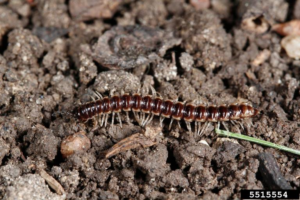Millions of Millipedes!
go.ncsu.edu/readext?864663
en Español / em Português
El inglés es el idioma de control de esta página. En la medida en que haya algún conflicto entre la traducción al inglés y la traducción, el inglés prevalece.
Al hacer clic en el enlace de traducción se activa un servicio de traducción gratuito para convertir la página al español. Al igual que con cualquier traducción por Internet, la conversión no es sensible al contexto y puede que no traduzca el texto en su significado original. NC State Extension no garantiza la exactitud del texto traducido. Por favor, tenga en cuenta que algunas aplicaciones y/o servicios pueden no funcionar como se espera cuando se traducen.
Português
Inglês é o idioma de controle desta página. Na medida que haja algum conflito entre o texto original em Inglês e a tradução, o Inglês prevalece.
Ao clicar no link de tradução, um serviço gratuito de tradução será ativado para converter a página para o Português. Como em qualquer tradução pela internet, a conversão não é sensivel ao contexto e pode não ocorrer a tradução para o significado orginal. O serviço de Extensão da Carolina do Norte (NC State Extension) não garante a exatidão do texto traduzido. Por favor, observe que algumas funções ou serviços podem não funcionar como esperado após a tradução.
English
English is the controlling language of this page. To the extent there is any conflict between the English text and the translation, English controls.
Clicking on the translation link activates a free translation service to convert the page to Spanish. As with any Internet translation, the conversion is not context-sensitive and may not translate the text to its original meaning. NC State Extension does not guarantee the accuracy of the translated text. Please note that some applications and/or services may not function as expected when translated.
Collapse ▲It’s hot outside. We’ve also had abundant rainfall which has left us with saturated soils throughout the area. These events are the perfect setting for a millipede invasion. The greenhouse millipede is the most common millipede in the U.S. No more than an inch long, this pesky critter goes mostly unnoticed until these two weather events occur together. Oxidus gracilis or greenhouse millipedes live outside for the most part but when soils become soggy they search for higher, drier ground. They become very obvious on sidewalks, driveways and carports and eventually they make it to the basement. This is when folks panic and call the office.
Because of the sometimes large numbers that show up, people fear that they have an infestation. This isn’t the case and millipedes quickly die after coming inside. They can be swept up or vacuumed but insecticides are not effective and are not recommended. These insects are completely harmless and don’t bite or sting. They’ll eventually go away but until then, they are just one of those summer pests that we have to learn to live with.
But I really hate it when they crunch under my feet!
For more information on millipedes visit:
Controlling Millipedes in and Around Homes from NC State Extension.

Photo from bugwood.org




